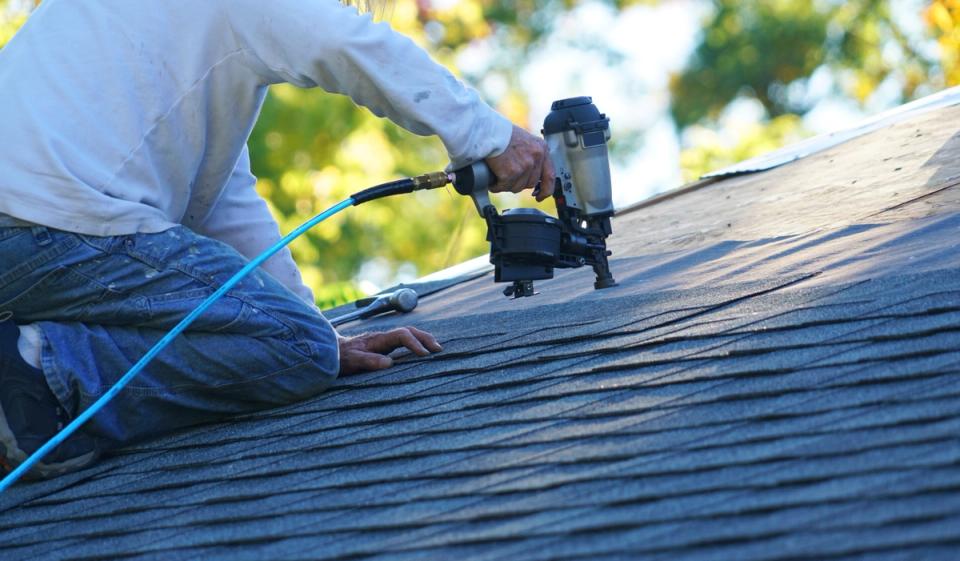
A roof is one of the most critical components of a home, protecting it from the elements while contributing to energy efficiency and overall structural integrity. Over time, however, roofs experience wear and tear, leaving homeowners with an important decision: repair the existing roof or invest in a full replacement. Making the right choice depends on various factors, including the roof's age, extent of damage, cost considerations, and long-term benefits. This guide will help homeowners determine the best course of action for their roofing needs.
Signs Your Roof Needs Attention
Before deciding whether to repair or replace a roof, homeowners should be aware of key warning signs that indicate roofing issues. These include:
- Leaks and Water Damage: Persistent leaks or water stains on ceilings and walls indicate underlying problems that need immediate attention.
- Missing, Cracked, or Curling Shingles: Damaged shingles compromise the roof’s protective barrier, making it more vulnerable to leaks and structural issues.
- Sagging Roof Deck: A sagging roofline suggests significant structural damage that may require more than a simple repair.
- Moss or Algae Growth: Excessive moss and algae can trap moisture, leading to premature deterioration of roofing materials.
- Rising Energy Bills: Poor insulation due to an aging or damaged roof can increase heating and cooling costs.
Assessing these signs can help homeowners determine whether repairs will suffice or if a full replacement is necessary.
When Roof Repairs Are the Best Option
Roof repairs are often the most cost-effective solution when the damage is minor and localized. Some situations where repairs make the most sense include:
- Limited Shingle Damage: If only a few shingles are missing or damaged, replacing them can restore the roof’s integrity.
- Minor Leaks: Small leaks around chimneys, vents, or skylights can often be patched without the need for a full roof replacement.
- Flashing Issues: Damaged flashing around roof penetrations can be repaired to prevent water intrusion.
- Recent Installation: If the roof is relatively new and still within its expected lifespan, repairs can extend its longevity without the cost of a full replacement.
Benefits of Roof Repairs
- Lower Cost: Repairs are significantly cheaper than full replacements, especially for minor damage.
- Quick Fix: Repairs can be completed faster than a total replacement, minimizing disruption to daily life.
- Extends Roof Lifespan: Addressing issues early can help a roof last closer to its maximum life expectancy.
When a Full Roof Replacement Is Necessary
In some cases, repairing a roof may only serve as a temporary solution, and a full replacement is the more practical long-term choice. Situations that typically call for a complete roof replacement include:
- Extensive Damage: If large sections of the roof are damaged or deteriorated, repairs may not be sufficient.
- Old Age: Most roofing materials have a set lifespan. Asphalt shingles last about 20-30 years, while metal roofs typically last 40-70 years, tile roofs can last 50-100 years, and natural slate roofs can endure 75-200 years with proper maintenance. If a roof is nearing the end of its expected life, replacement is the best option. If a roof is nearing the end of its expected life, replacement is the best option.
- Multiple Leaks: Frequent or widespread leaks indicate deeper structural issues that may not be fixable with simple repairs.
- Structural Problems: If the roof deck or supporting structures are compromised, a full replacement is needed to ensure safety and stability.
Benefits of Roof Replacement
- Long-Term Investment: A new roof can last decades, eliminating the need for frequent repairs.
- Increased Energy Efficiency: Modern roofing materials offer better insulation, reducing energy costs.
- Boosts Home Value: A new roof enhances curb appeal and can increase a home’s resale value.
- Prevents Recurring Issues: Replacing the entire roof ensures that hidden damage and weak spots are fully addressed.
Cost Considerations
Cost is often the biggest factor when deciding between roof repairs and a full replacement. While repairs are cheaper upfront, repeated fixes can add up over time. Homeowners should weigh:
- Short-Term vs. Long-Term Costs: If repairs are frequent and costly, replacing the roof may be the more economical choice.
- Insurance Coverage: Some repairs and replacements may be covered by homeowners insurance, especially if damage is due to storms or accidents.
- Financing Options: Many roofing companies offer financing plans for replacements, making the cost more manageable.
Choosing the Right Roofing Contractor
Regardless of whether a homeowner opts for repairs or a full replacement, hiring a qualified roofing contractor is crucial. When selecting a contractor:
- Check Credentials: Ensure the contractor is licensed, insured, and has positive customer reviews.
- Get Multiple Estimates: Comparing quotes can help homeowners get the best value for their budget.
- Ask About Warranties: A reliable contractor should offer warranties on both materials and workmanship.
- Review the Contract Carefully: Homeowners should fully understand the scope of work, timeline, and payment terms before signing.
Your Roof, Your Investment
The choice between roof repairs and a full replacement depends on factors such as age, extent of damage, and overall cost-effectiveness. Repairs offer a cost-effective solution for minor issues, while a full replacement delivers lasting benefits such as better energy efficiency, higher property value, and greater durability. A professional roofing contractor can evaluate a home's condition and provide guidance on the most suitable and cost-effective roofing solution. By addressing roofing concerns promptly, homeowners can protect their investment and ensure their home remains safe and secure for years to come.